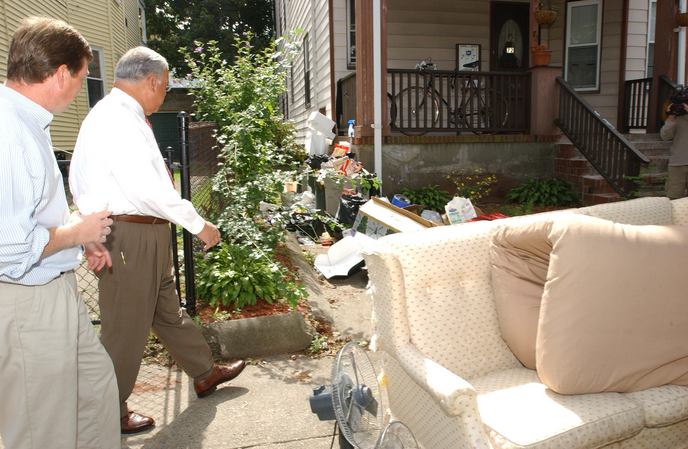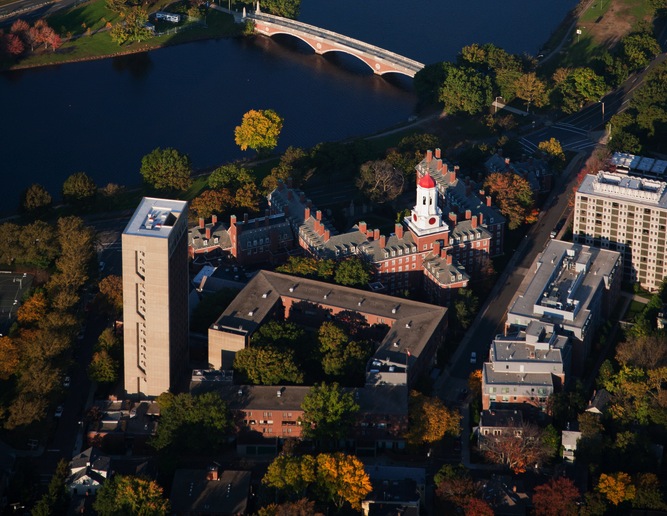
Boston’s neighborhoods are perpetually evolving. Many that were once industrial, blue collar regions of the city have been swept up in gentrification, quickly pricing out longtime natives and paving the way for deeper-pocketed people to plant their roots. That same phenomenon could someday soon be the catalyst that renders Allston Christmas utterly extinct.
In what began as a search to find out how the term ‘Allston Christmas’ was originally coined, and why, turned into an examination of what’s to come of Allston Christmas’ future. You might say I’ve been living my very own An Allston Christmas Carol by Chucky Dickens.
To understand what the future of Allston Christmas holds, we must first break down the idea of the Boston’s anti-holiday and digest how it came to be.
Let’s consider some of the factors specific to Allston-Brighton that has made it become the epicenter for hellish moving experiences: It’s relatively inexpensive, it’s in close proximity to a handful of Boston’s most renowned higher-ed institutions, and much of the housing there is comprised of rental units.
Those three aspects of Allston-Brighton are why the neighborhood has garnered such a negative rep when it comes to moving on September 1, despite the fact that much of Boston citywide is also hauling junk out of one space and dragging it to another.
But why? Why did this happen and how is it poised to impact the imminent future?
The so-called ‘bad money’ drives out the ‘good money’
To answer that question, let’s wind back to the clocks some 60-years.
BostInno spoke with Suffolk University Department of History Chair Robert Allison. Also an active professor, Allison is an expert in Boston history and despite his extensive knowledge, had never heard of the phrase Allston Christmas before.
“I conferred with some of my colleagues,” he said, “and nobody’s hear of it.”
That’s not to say, however, he has no idea how moving in Allston-Brighton became a time of year the Grinch would look forward to for the remaining 364 days.
“It’s been a transition that’s been going on since the 1960s,” explained professor Allison. “It’s tied with the expansion of BU and BC.”
Boston University, for one, is situated at the intersection of Brookline, Back Bay and Allston. As BU expanded, naturally students began scouring the surrounding area for affordable housing.
“Of those three,” continued Professor Allison referencing the aforementioned areas, “Allston, in the 1950s and 60s, was a blue-collar neighborhood. There were a lot of renters and a lot of low-cost housing.”
The neighborhood’s Boston City Councilor and lifelong resident, Mark Ciommo, reminisces similarly.
“It’s predominantly because of the student population,” Councilor Ciommo told BostInno prior. “We are surrounded by three world-class institutions and have a lower occupancy rate than other neighborhoods in the city. We have become a more transient neighborhood.”
Councilor Ciommo also mentioned that he only started hearing of the actual Allston Christmas terminology about five or six years ago. And while Professor Allison hadn’t heard the oft-used phrase to describe moving day in Allston, it’s worth a mention that ‘Allston Christmas’ was first added to Urban Dictionary in 2008. Though that’s hardly an accurate indicator as to the name’s origin, consider how quickly items are added to the likes of Wikipedia once their popularity skyrockets.

“Allston Christmas is not a new phenomenon,” added Allston Village Main Streets Executive Director Alana Olsen. “This is something the city and major institutions have been trying to navigate for a number of years.”
BU alone will see some 3,900 students move in over the weekend, exemplifying just how much local institutions of the same caliber have exploded over the years. With more students comes a drastic increase in demand for housing they’re able to expense, and subsequently an increase in student population density in applicable neighborhoods like Allston.
“It becomes a self-fulfilling thing,” said Professor Allison.
With a short supply of the necessary student housing and a booming demand for it comes a rise in prices. Allston’s student population is actually helping to propel the cost of living upward in what’s typically considered an economical neighborhood option. Recent graduates, too, can no longer afford the astronomical prices of faster growing neighborhoods, and are therefore unwilling to leave the comforts of Allston.
“There is a change going on where the recently graduated people who can’t afford place like Southie, also once a blue-collar area, are renting in Allston,” explained Professor Allison Further, referencing Gresham’s Law. “The so-called ‘bad money’ drives out the ‘good money’.”
But there’s also another driving force at work here and it’s coming from across the Charles River.
Harvard is a major stakeholder in property in Allston with some 300 acres, according to Olsen. Upon this land, development is imminent and will help to change the face of Allston for better or for worse. If you’re a staunch hater of Allston Christmas, this bodes well for you.
“The impact that Harvard will have on Allston is going to be so big that I can’t even explain it,” said Olsen. “We’re watching that take shape everyday.”
In October 2013, the Boston Redevelopment Authority approved Harvard’s Institutional Master Plan which includes nine projects totaling 1.4 million square feet of development. Harvard Business School, Harvard’s athletic facilities and other structures call Allston home as opposed to Cambridge (there’s less space available, according to Professor Allison), and their master plan involves the further relocation of programs, in addition landscape-altering projects, to Allston.
Harvard graduates now, on average, land a job earning $90,000 annually, significantly more than Boston University or Boston College for example. This allows them to be better equipped to landing a living space in Allston upon graduating and more and more students are likely to do so.
Over the past three years, the number of Harvard Graduates who intend to stay in the region post-college has increased from 34.9 percent in 2012 to 42 percent in 2013, and finally to 47 percent in 2014, according to the Harvard senior class survey of those classes.
The impact that Harvard will have on Allston is going to be so big that I can’t even explain it
Part of Harvard’s landownership is also linked to real estate rentals.
“It’s not like [Harvard University president] Drew Faust is going around collecting rent,” joked Professor Allison, but the school most certainly does business with management firms who do.
They, along with other speculators, are pumping money into projects as opposed to buying and renting leasing the traditional way.
“I’m not surprised that Allston attracts a lot of investors rather than owner occupants,” said Marc Savatsky, a member of Boston’s ONEin3 Council and development project manager at New Ventures Boston. “Investors buying multi families in Allston this past year spent an average $275 per square foot as compared to $250 per square foot the year prior. When properties appreciate investors tend to be more apt to be diligent about upkeep and spend money on improvements which I think is a good thing for the neighborhood.”
It’s a recipe for an evolving neighborhood: One part higher earnings for grads, a splash of increased desire to remain local upon receiving that diploma, throw in a healthy portion of relocated programming to the area, shake it over a decrease in long-term residents and voilŕ; you have a neighborhood in which moving could become less and less of a frustrating spectacle.
Professor Allison told me of a student he had years ago, in which that eager learner set out in the neighborhood to get a feel for the residents who lived there. There was only one family, he said, that remained since the expansion of the nearby colleges and universities.
In essence, the disappearance of Allston Christmas is contingent on gentrification which can be a burden for a neighborhood to take on. Sure it could result in community improvements, renovated buildings and bolstered infrastructure, but it drives out the lifeblood of the area as well and makes a cultural impact, for better or for worse.
The question remains, though, where the the current Allston crowd will eventually be forced to move into. Places like Mission Hill are experiencing the same circumstances, mentioned Olsen, and others like Roxbury are poised to become the city’s next Innovation District.
This is a problem Mayor Walsh is currently working on. For Allston Christmas this year he’s undertaken a few initiatives that will hopefully temper the sting of the entire process, but trying to create a continuously affordable place for people and students to live affordably without experiencing the throes of Allston Christmas is a logistical issue that won’t be solved over night.
“I think that Mayor Walsh is a very very smart man” said Olsen in closing. “He understands that to address problems, he must address the affects and the causes. He’s going to be working to address those at a much higher institutional level.”

